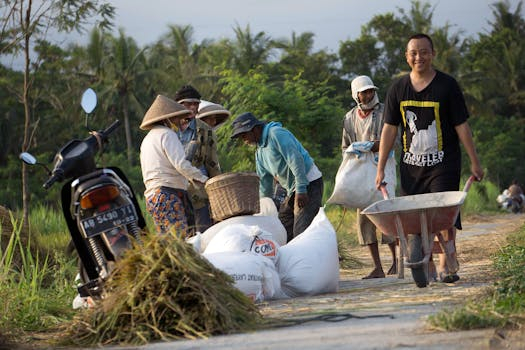Organic Cotton’s Comeback: Why Farmers Are Switching to Regenerative Methods
Organic cotton has been making a comeback in the world of fashion and sustainability. More and more farmers are now switching to regenerative methods to produce this versatile and eco-friendly crop. With the rise in demand for sustainable and ethically-made products, it’s no surprise that organic cotton is gaining popularity among both consumers and farmers. But what exactly is regenerative farming and why are farmers making the switch? Let’s explore the benefits and the future of organic cotton in this article.
The Negative Impact of Conventional Cotton Farming
Before we delve into the world of regenerative farming, let’s first understand the problems associated with conventional cotton farming. Conventional cotton is grown using intensive farming methods that rely heavily on pesticides, herbicides, and synthetic fertilizers. These chemicals not only harm the environment, but also pose a threat to the health of the farmers and communities consuming the cotton.
In addition to the use of harmful chemicals, conventional cotton also requires a large amount of water. According to the Organic Trade Association, it takes approximately 2,700 liters of water to produce a single cotton t-shirt. This high water consumption puts a strain on water resources, especially in regions where water scarcity is already an issue.
Furthermore, the production of conventional cotton has negative impacts on soil health. The constant use of chemicals and monoculture farming practices degrades the soil, making it less fertile and more prone to erosion. This not only affects the quality of the cotton produced, but also the overall health of the land.
What is Regenerative Farming?
Regenerative farming is a holistic and sustainable farming approach that focuses on improving the health of the soil and creating a self-sustaining ecosystem. This method of farming goes beyond organic farming practices which mainly involve the avoidance of synthetic chemicals. Regenerative farming aims to rebuild soil health by using techniques such as cover cropping, crop rotation, and composting.
By building healthy soils, regenerative farming helps to promote biodiversity and increase the resilience of crops to pests and diseases. It also helps to retain water in the soil, reducing the need for irrigation. And since most organic cotton is rain-fed, this makes it a more sustainable option in regions where water resources are scarce.
The Benefits of Regenerative Farming for Organic Cotton Production
1. Environmental Sustainability
Regenerative farming practices help to promote soil health, reduce water consumption, and decrease the use of chemicals. This leads to a more environmentally sustainable way of farming, reducing the negative impact on the land, water, and air. With regenerative farming, the cotton plant is grown in a way that works with nature rather than against it.
2. Improved Quality and Yield
By focusing on soil health, regenerative farming helps to improve the quality and yield of cotton. Healthy soils produce healthier, more robust plants that are better able to withstand pests and diseases. This results in better quality cotton with a higher yield, making it a more profitable option for farmers.
3. Economic Benefits for Farmers
Switching to regenerative farming practices can also bring economic benefits to farmers. By reducing the use of expensive chemicals and fertilizers, regenerative farming helps to decrease production costs. And since organic cotton often sells at a premium price, it can lead to increased profits for farmers who make the switch.
4. Ethical and Sustainable Supply Chain
Organic cotton produced through regenerative farming methods not only benefits the environment and farmers, but also the entire supply chain. Consumers are becoming more aware and conscious of the products they buy, and the ethical and sustainable production of organic cotton fits in with their values. This creates a positive and transparent supply chain that benefits everyone involved.
The Future of Organic Cotton
The switch to regenerative farming methods is crucial for the future of organic cotton. With consumer demand for sustainable and ethically-made products on the rise, there is an increasing need for farmers to adopt more eco-friendly and regenerative farming practices. This will not only benefit the environment and the farmers, but also the entire supply chain and the future of organic cotton in the fashion industry.
Many fashion brands are now starting to source their cotton from regenerative farms, recognizing the importance of sustainable and ethical production. With this shift in consumer and industry demand, organic cotton and regenerative farming practices will only continue to grow and make a positive impact on the fashion industry and the planet.
Conclusion
The comeback of organic cotton is not just a trend, but a necessity for a more sustainable future. By switching to regenerative farming practices, farmers are able to produce high-quality, environmentally-friendly cotton that benefits both the environment and their livelihoods. The future of organic cotton looks promising, and with more awareness and support from consumers, we can continue to drive towards a more sustainable and ethical fashion industry.






